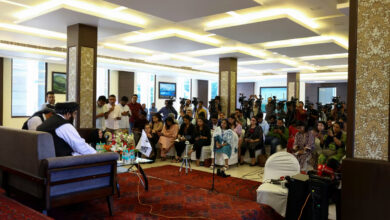
Fewer than 1 in 10 cardiologists in the US are women, and those who do choose this male-dominated specialty earn less money, according to a new study.
Researchers adjusted for differences in job characteristics, like how much time a doctor is on-call, the types of practices doctors worked in and other factors, and still found women cardiologists making slightly less.
These imbalances are likely not good for the quality of healthcare, they write in the Journal of the American College of Cardiology.
“We fail to see a diversity that we should see,” said senior study author Dr. Pamela Douglas of Duke Clinical Research Institute in Durham, North Carolina.
Some patients might prefer a female cardiologist, but would be hard pressed to find one, she told Reuters Health.
Differences in task specialization, and working on call hours, may be due to personal choice, which is not necessarily a problem, but the gender wage gap is as troubling in cardiology as it is everywhere else, Douglas said.
The study team used data from 161 medical practices in the US in 2013, including 2,450 male and 229 female cardiologists.
Women more often specialized in non-invasive cardiology, and were slightly less likely to work full time; 80 percent of women worked full-time compared to 90 percent of their male counterparts.
Almost 18 percent of women took no on-call hours, compared to seven percent of men.
Women had an average salary of about US$400,000 compared to more than US$510,000 for men.
Based just on job and productivity characteristics, the researchers predicted that the women would have been making US$31,749 more per year than they actually were.
“Most professions show a wage gap, there’s nothing unique to cardiology or brand new here,” Douglas said.
Positive change can happen if we first notice there is a need for it, she said.
“Gender differences in compensation that cannot be explained by differences in workplace performance must be eradicated,” said lead author Dr. Reshma Jagsi of the University of Michigan in Ann Arbor.
“Professional societies and cardiovascular practices must carefully examine their cultures as well as objective practices to promote greater transparency, accountability, and standardization of how pay is determined,” Jagsi told Reuters Health by email.
In cardiology, on-call duties can be frequent and demanding, and other factors like occupational radiation exposure, gender bias, and overt discrimination may influence the dearth of women in the field, she said.
It could also be that society subtly encourages men to pursue interventional disciplines and women to spend time counseling patients, in ways that are consistent with gender stereotypes, she said.
“I think the gender differences in cardiology have to do with choices that men and women make in terms of the ways that they specialize within the profession,” Douglas said.
“If you need an angioplasty more likely it would be a man doing it rather than a woman,” she said.
But women aren’t choosing to do the “easier” jobs, she said – obstetrics is predominantly female, and requires a high level of off-hours activity.
Women may feel less welcome in some other specialties, which would be a problem, she said.
“In terms of attracting talent into the profession, if there’s a perception that as a woman you may not be treated fairly then that’s a detractor for women choosing the specialty,” she said.
“We’re not by any means suggesting that men are better than women or women are better than men,” as quality of care and patient outcomes were not included in the study, Douglas said.




